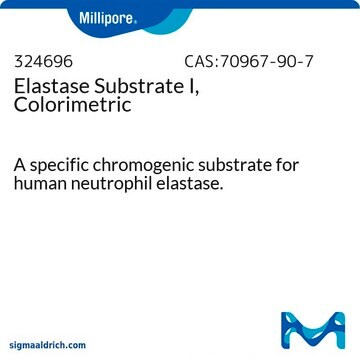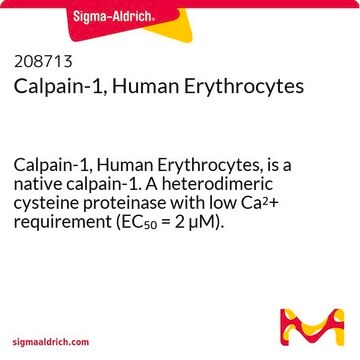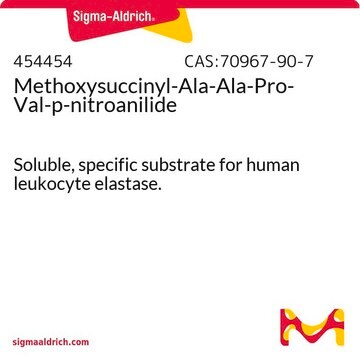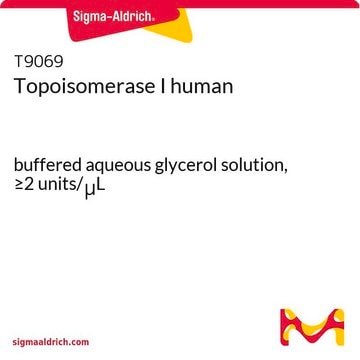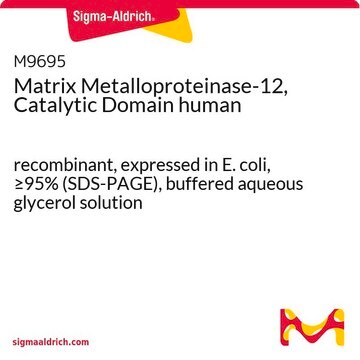324681
Elastase, Human Neutrophil
Elastase, Human Neutrophil, CAS 9004-06-2, is a serine protease that degrades elastin, collagen, and proteoglycans
Synonyme(s) :
Elastase, Human Neutrophil
About This Item
Produits recommandés
Niveau de qualité
Forme
lyophilized solid
Activité spécifique
≥20 units/mg protein
Fabricant/nom de marque
Calbiochem®
Conditions de stockage
OK to freeze
Conditions d'expédition
ambient
Température de stockage
−20°C
Description générale
Avertissement
Définition de l'unité
Forme physique
Notes préparatoires
Reconstitution
Remarque sur l'analyse
Autres remarques
Junger, W.G., et al. 1992. Biol. Chem. Hoppe-Seyler 373, 691.
Selak, M.A. 1992. Thromb. Haemost.68, 570.
Baugh, R.J., and Travis, J. 1976. Biochemistry15, 836.
Informations légales
Mention d'avertissement
Danger
Mentions de danger
Conseils de prudence
Classification des risques
Eye Irrit. 2 - Resp. Sens. 1 - Skin Irrit. 2 - STOT SE 3
Organes cibles
Respiratory system
Code de la classe de stockage
11 - Combustible Solids
Classe de danger pour l'eau (WGK)
WGK 3
Point d'éclair (°F)
Not applicable
Point d'éclair (°C)
Not applicable
Certificats d'analyse (COA)
Recherchez un Certificats d'analyse (COA) en saisissant le numéro de lot du produit. Les numéros de lot figurent sur l'étiquette du produit après les mots "Lot" ou "Batch".
Déjà en possession de ce produit ?
Retrouvez la documentation relative aux produits que vous avez récemment achetés dans la Bibliothèque de documents.
Les clients ont également consulté
Notre équipe de scientifiques dispose d'une expérience dans tous les secteurs de la recherche, notamment en sciences de la vie, science des matériaux, synthèse chimique, chromatographie, analyse et dans de nombreux autres domaines..
Contacter notre Service technique
